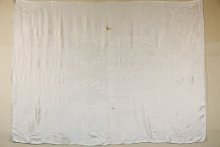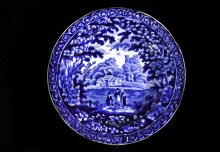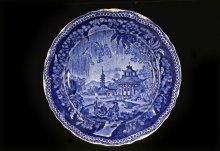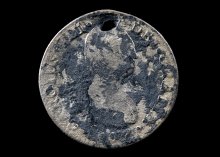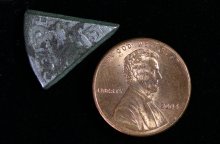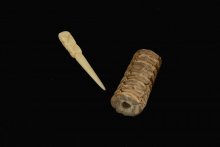The Illinois Territory (1776-1818)
The capture of Kaskaskia by a small American force in July 1778 established a claim by the new United States to the Illinois Country. The 1783 Treaty of Paris formally awarded the area east of the Mississippi River to the new nation. Many French settlers crossed the Mississippi, uneasy with the thought of living under American government. Others stayed on, operating businesses and participating in establishing the new government.
Native Nations, excluded from treaty negotiations at the end of the Revolutionary War, faced yet another challenge for their territory. Between 1803 and 1812, Native Americans, who did not fully understand the concept of private property and were often under duress, ceded most of their land in Illinois to the United States for goods and annual payments.
The Illinois Herald was the first newspaper published in the Illinois Territory and a key voice in pushing for statehood. Although it was based in the territorial capital at Kaskaskia from May 1814 to April 1816, only this December 13, 1814, issue survives.
In 1818, the year Illinois achieved statehood, this table runner was brought to Illinois from Virginia. It is woven with scenes from the Bible, including the Last Supper.
Much of what we know about the Kickapoo Indian Tribe in Illinois comes from an archaeological investigation that took place prior to a road-building project in the 1970s. This copper or brass kettle was one of the artifacts uncovered from the Rhoads village site. Excavations revealed a mix of traditional stone tools, arrow points, pottery, and other objects mixed with items of European origin including glass beads, silver crosses and jewelry, ceremonial smoking pipes, and this kettle.
This plate was produced by James & Ralph Clews in Staffordshire. Their ceramics were commonplace on the American frontier. The image in the center of the plate is a distant view of Rochester Castle, on the River Medway, east of London. Portions of the castle date to the 11th century. English artist Joseph Mallord William Turner depicted the castle in his work Rochester Castle From The River, painted circa 1793.
In the early 1800s, potteries in the Staffordshire region of England were becoming more and more dependent on the American market at a time when relations between the two nations were sliding towards war. In the months leading up to the War of 1812, trade was suspended, and a financial crisis ensued that, according to pottery owner Ralph Stevenson, left one-third of pottery workers unemployed and 35 businesses shuttered. His business had just opened in 1810.
This 1807 Spanish Reales (both obverse and reverse sides are shown) was worn as jewelry and found around the neck of a person buried in a Catholic cemetery near Kaskaskia. At the time he was buried, Kaskaskia was on the east side of the Mississippi River, but the river’s course was altered during major flooding in 1881, which destroyed most of the town and exposed the graves.
Early coins were made of precious metals, with the value of the metal being equal to the face value of the coin. Since the value of the metal was key to its worth, no one thought twice about cutting a silver coin into pieces; a rather novel way of making change, one might say. This sliver of a silver dollar coin, eight Spanish reales (royals), was found during an excavation of the Fort Williams site on the Wabash River near its confluence with the Ohio River. A Spanish piece of eight was one-eighth of the eight reales coin.
When Elihu and Sophronia Thorpe moved to Illinois from New York in 1841, they brought this bone toothpick and corncob case with them. It had belonged to Sophronia’s grandfather, Alexander Osborn, who served in the Revolutionary War. According to family legend, Alexander had carved the toothpick and case while he was in camp, sometime around 1780.
The Eastern Massasauga Rattlesnake is a small, venomous snake recently listed as threatened by the U.S. Fish and Wildlife Service. It persists in only a few locations in Illinois, Indiana, Iowa, Michigan, New York, Ohio, Pennsylvania, and Wisconsin. The Fish and Wildlife Service describes the Massasauga as “a small snake with a thick body, heart-shaped head and vertical pupils.”
The Prairie Cicada’s (Megatibicen dorsatus) sound is unique to the tallgrass prairie. Because much of the prairie was converted to farming and other uses before it could be thoroughly studied, we may never know what the cacophony of insect songs sounded like in this distinctive habitat. Many of those insects are now as rare as original prairie remnants. The Prairie Cicada persists in some of those remnants as well as in small railroad prairies.
Pages







